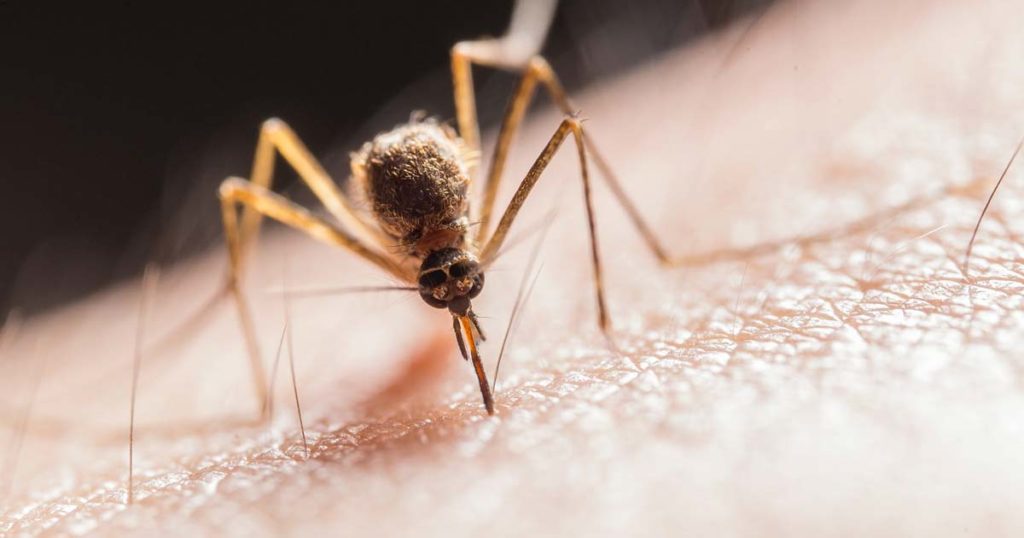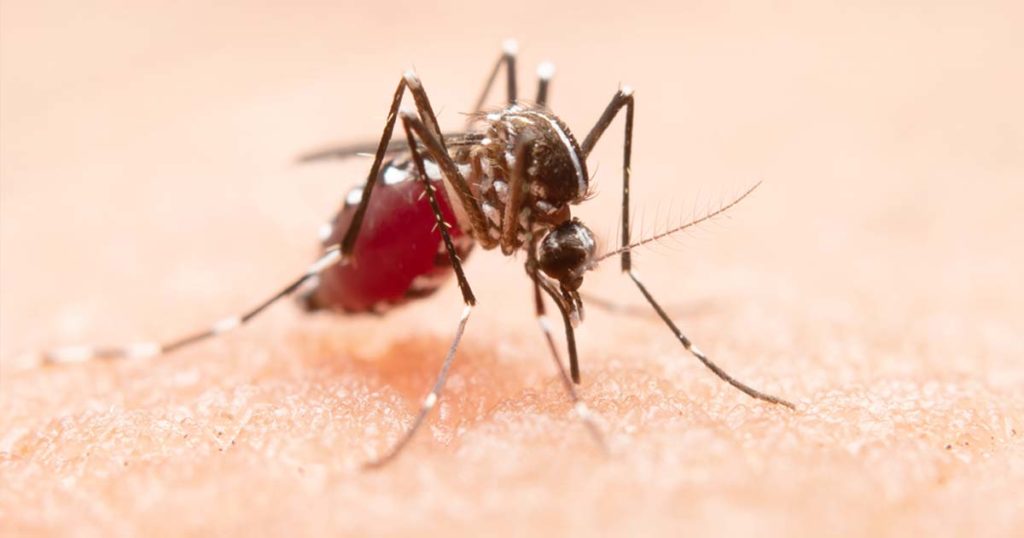Can you fend off cancer simply by adjusting your diet? The answer is Yes . . . in a way. Upgrading your diet does not guarantee that you’ll always remain cancer-free, but it can yield a dramatic improvement in the odds.
In the past 30 years, the National Cancer Institute has devoted an increasing share of its research dollars to the relationship between nutrition and cancer. By the mid-1960s, research had already suggested that diet has a major role in the development of many cancers and that reducing or excluding certain foods from the diet might play a significant part in cancer prevention. By the late 1970s, scientists were able to put a number to the risk. They estimated that diet contributed to cancer deaths in as many as 40 percent of the cases among men and 60 percent of the cases in women. A 1982 study followed up with a comparable estimate: 35 percent of cancer deaths were said to be related to certain elements of the diet. More recently, some scientists have argued that as many as 80 percent of bowel and breast cancers could be prevented by changes in the diet. But even as we continue to learn more and more about specific culprits in cancer, scientists have yet to find any sure-fire means of prevention.
What’s holding us back? Part of the problem lies in the tools available to researchers. For instance, many major studies rely on surveys of the eating habits of large population groups, drawing conclusions by comparing their dietary patterns and health outcomes to those of other groups. If women in countries with high-fat diets (such as the United States) have higher incidences of breast cancer than women in countries where less fat is consumed (for example, Japan), it can then be theorized that a high-fat diet may be one of the causes of breast cancer. If further studies show that when Japanese women move to the United States and adopt a higher-fat diet their incidence of breast cancer goes up, that hypothesis is strengthened.
This, however, is far from proof of a cause/effect relationship. Indeed, the latest studies have failed to verify any link between dietary fat and breast cancer. Nor do any of the after-the-fact population studies pinpoint the specific foods or compounds that may be at fault. For more definitive proof, researchers analyze the effects of certain foods on animals; but this too falls far short of certainty. What happens to rats or mice in the laboratory is not always the same thing that happens to humans in their normal environment.
The only way to be reasonably certain of the effects of diet on health is to stage a large, scientifically controlled study that carefully monitors the diets of human subjects and notes the diseases they develop over a period of years. Although these studies are very expensive and the results may take decades, a number are underway. For example, the National Cancer Institute is sponsoring several long-term prevention trials at participating medical centers around the country.
As the growing body of research about diet and cancer indicates, this is an extremely complex subject. “People are always looking for the magic bullet, some simple answer for what causes cancer or what can prevent it,” says Carolyn K. Clifford, Ph.D., former chief of the Diet and Cancer Branch of the National Cancer Institute. “But the fact is, there is no simple answer. Overall dietary patterns—and not just one single food—are what must be examined. There is enough evidence available to permit the formulation of some dietary guidelines related to cancer, but we keep learning more.”
A brief overview of how the disease develops can help in understanding the relationship between nutrition and cancer. There are three major stages in cancer development:
- Initiation, in which a cancer-causing agent first damages a cell’s genetic material.
- Promotion, when cells in which initiation has occurred are exposed to chemicals that speed up cell division. Such chemicals cannot initiate cancer themselves: Generally, long-term exposure to these promoters is necessary for cancer to develop.
- Nutritional factors are thought to have their greatest impact on cancer in this stage.
- Progression is the final stage of cancer development when cells become fully malignant and acquire the ability to metastasize, or spread, to other parts of the body.
A number of foods have now been implicated in the development of cancer. They include both naturally occurring substances and artificial additives. Cooking and food preservation methods may also influence the development of cancer. And cancer-causing agents found in pesticides or even in packaging sometimes get into our bodies through the food we eat.
Not all research ends in a guilty verdict, however. Several foods initially denounced as cancer-causing have later been cleared of all charges. We’ll take a look at these substances as well, and see where they stand today.
Even as research continues, it’s possible to make a few general recommendations that are likely to stand the test of time. Dietary guidelines recently published by the American Institute for Cancer Research and the World Cancer Research Fund suggest that to minimize the risk of cancer we should:
- Limit fat to 30 percent or less of your caloric intake, and keep most of it monounsaturated or polyunsaturated.
- Keep salt intake to 6 grams a day or less.
- Eat red meat and processed meats in moderation—no more than 5 ounces per day.
- Keep perishable foods frozen or refrigerated, and consume them promptly.
- Cook food at low temperatures. Boiling or steaming is better than frying or grilling.
- Don’t exceed two alcoholic drinks a day.
1. Your Best Bet: Cut Dietary Fat
There is more research on fat and its relationship to cancer than on any other component of the American diet. While the results are far from conclusive and shed little light on the reason, there is no question that population groups with a high fat intake also have a higher cancer rate. As the findings about American and Japanese breast cancer rates indicate, population studies have shown a strong correlation between fat and cancer—especially in the breast, colon, prostate, rectum, and lining of the uterus. One study even found higher rates of skin cancer among people who eat an appreciable amount of fat. Another study linked an increase in precancerous conditions in the colon to the partially hydrogenated fats used in baked goods and candy. However, most research suggests that it’s a total fat intake, rather than a specific type of fat (such as saturated, monounsaturated, or polyunsaturated) that shows a link with cancer.
It should not be surprising, therefore, that excess weight itself is a risk factor for cancer. Research has found that heavy people have a greater risk both of developing cancer and of dying from the disease than do those of normal weight. There are several possible reasons for this link between total caloric intake and cancer:
- Fatty tissues store carcinogenic chemicals.
- Taking excessive calories may make it easier for cells to multiply.
- The release of hormones from fatty tissues may contribute to the formation and growth of malignant tumors.
Despite all the suspicious statistics, however, there is still no definitive proof that dietary fat encourages cancer. Indeed, there’s some evidence to the contrary. Several large studies have failed to find an association between total fat intake and breast cancer, leading one group of experts to conclude that “the true relation between fat intake and breast cancer does not appear to be particularly strong or consistent.” Studies of people with prostate and colon cancer have also been unable to confirm that fat itself plays a major role as a risk factor. Further research is necessary before we can be certain that decreasing the amount of fat you eat can protect you from cancer.
Of course, there are plenty of other reasons to cut back on fat—most notably its tendency to promote heart disease. So it’s important to know where the fat in your diet is coming from, says the NCI’s Clifford. “For most people, the major source of damaging saturated fat is animal products,” she points out. In addition to simply reducing intake of animal products—including dairy products—you can cut down on fat by trimming all visible fat from meats, removing skin from poultry, and draining liquefied fat from cooked ground beef. Clifford also notes that supermarkets are addressing our concerns about fat by offering a wider choice of leaner products.
Some scientists think that red meat carries special risks of cancer, particularly colon cancer. Red meat certainly has higher levels of fat than poultry or fish, and Harvard University’s study of 88,000 nurses found that women who ate red meat daily were more than twice as likely to develop colon cancer as those who ate it only a few times a week. Again, however, this is an area of disagreement among scientists. Although some studies have found that red meat is associated with a higher risk of colon cancer, the risk does not seem to be related to the fat content of the meat. In fact, some experts speculate that it may not be the meat itself, but the lack of other protective dietary components such as fruits and vegetables, that increases the risk of colorectal cancer. And other researchers have found little evidence that red meat contributes to increased cancer risk at all. It seems that more research is necessary before we fully understand the relationship between red meat and cancer.
Fat may work in a number of different ways to promote different types of cancer. In the colon, for example, bile production may play a role in the promotion of tumor growth. Bile is a fluid manufactured in the liver to aid in the digestion of fats; the more fat you consume, the more bile acids your liver produces, and an excess of bile acids may encourage cancerous tumors to grow. Saturated fat in particular is associated with colon (and rectal) cancer.
Fat consumption may also stimulate the production of estrogen, and high levels of estrogen promote the growth of breast tumors. Decreasing the amount of fat in the diet has been shown to lead to reduced levels of estrogen. However, there the evidence of a fat/breast cancer relationship stops short. While population and animal studies have linked high-fat consumption to increased breast cancer rates, some large controlled studies of women have failed to bear out the relationship. If there is one fact that scientists can agree upon at this point, it is that larger, longer-term studies are needed. The Women’s Health Initiative, a 15-year study begun by the National Institutes of Health in 1994, is one attempt. In this study, one group of participants is limiting their fat intake to less than 20 percent of their total calories.
While the average American now gets nearly 40 percent of his or her calories from fat, many experts say fat intake should be limited to 30 percent—and some scientists believe even that figure is too high. In testimony before Congress in 1993, Dr. Peter Greenwald, director of the National Cancer Institute’s Division of Cancer Prevention and Control, said that 30 percent is “a practical target,” but “data could be used to justify an even greater reduction.”
2. Alcohol: Another Leading Suspect
Your health can be affected not only by what you eat, but also by what you drink. Although it’s now thought that moderate amounts of alcohol may have a beneficial effect on your heart, the same is not true for alcohol and cancer. Many studies in the latter area suggest a higher risk of cancer among those who drink. According to the National Cancer Institute, alcohol is associated with an estimated three percent of cancers in the United States. A wide range of laboratory and population studies show that it can influence all three phases of cancer: initiation, promotion, and progression.
Again, however, these findings are far from definitive. While the pattern of alcohol consumption and increased cancer rates continues to be confirmed by population studies, ethanol—pure grain alcohol—does not appear to cause cancer in laboratory animals. However, the alcohol you drink is metabolized in your body to a substance called acetaldehyde, which has been found to have carcinogenic effects in laboratory studies.
High alcohol consumption has been linked most often to cancer of the liver, breast, rectum, mouth, esophagus, pharynx, larynx, digestive tract, bladder, and lungs. In addition many studies have observed a synergistic effect between alcohol consumption and cigarette smoking; that is, cigarettes and alcohol, working together, have a greater likelihood of causing cancer than either does alone. This is especially true of cancers of the mouth and throat; as many as three-quarters of oral cancers in the U.S. are attributed to the alcohol/tobacco combination. According to one theory, alcohol increases the body’s absorption of the carcinogens in tobacco.
Researchers disagree on the ways in which alcohol works as a cancer-promoting agent. Many studies have shown that alcohol depresses your immune system, and thus may impair your body’s ability to recognize and eliminate cancerous cells. Alcohol also seems to decrease levels of vitamins A and E, two important antioxidant vitamins that are thought to have a role in preventing cancer. (For more information on antioxidants, see “Food That Fights Cancer.”) Researchers theorize that alcohol might also promote cancer by activating certain enzymes which contribute to malignancy, by inhibiting damaged DNA from repairing itself, or by actually stimulating tumor growth. Alcohol also seems to interact with available vitamin A in a manner that may lead to increased cancer risk.
It is also possible that other ingredients in alcoholic beverages could be implicated in the alcohol/cancer association. For example, the cancer-causing substances called nitrosamines are found in some alcoholic drinks, particularly beer. Indeed, according to one theory, rather than actually being a cancer-causing substance itself, alcohol instead works with other substances (such as tobacco) to promote the growth of malignancies.
Some of the most confusing data come from breast cancer research. Many studies have shown an association between alcohol consumption and breast cancer, but the link has not always been strong, and scientists have not always ruled out other possible explanations. However, some of this research has turned up surprising results. The Nurses’ Health Study, for example, found that women who drank only moderately (one or two drinks a day) had a 50 percent higher rate of breast cancer than those who did not drink at all (although the risks of the two groups equalized somewhat after their four-and eight-year follow-up evaluations).
In another study, women who drank about one ounce of pure alcohol (the amount in two average drinks) daily for three months were found to have higher levels of the suspected cancer-promoting hormone estrogen than did non-drinkers. Yet another study found that the risk of breast cancer in postmenopausal women increases if they consume alcohol regularly and also have a low level of the B vitamin folic acid. The researchers concluded that taking 400 micrograms of folic acid daily could offset the risk of drinking. Boosting your folic acid intake may also neutralize alcohol’s tendency to increase the risk of colorectal cancer.
Most of the more than 50 extensive human studies conducted in the past 35 years, have found an association between alcohol and cancers of the colon and rectum. Beer-drinking seems to put both men and women at higher risk than consuming other types of alcoholic beverages. Alcohol is thought to promote colon and rectal cancers in several ways: by suppressing the immune system, changing bile metabolism, and dosing the area with cancer-causing nitrosamines.
Excessive drinking can bring on liver disease, and alcohol seems to play a role in the promotion of liver cancer. One study found that heavy drinkers have more than four times greater likelihood of developing liver cancer than those who drink lightly or not at all.
3. Why Cured Meat Is Sometimes a Problem
Nitrosamines are substances that occur naturally in some foods and in tobacco. They form during the metabolism of nitrites and nitrates—two closely related compounds made of nitrogen and oxygen and used to cure and preserve meats. The bad news is that nitrosamines have been found to be potent carcinogens, possibly capable of promoting cancer years after ingesting them, according to one recent study. But there is also good news about our exposure to nitrosamines: In the two decades since these carcinogenic substances were first found in food, the amount of nitrites and nitrates in the American food supply has decreased significantly.
In the early 1970s scientists identified nitrosamines—already known to be carcinogenic—in a variety of foods, including cooked bacon and sausage, cured pork, and dried beef. Bacon received a great deal of attention because it had the highest levels. Food processors used nitrates and nitrites extensively to give cured meats a pink, fresh look and to protect against botulism, a potentially deadly bacteria. While the government never banned these substances, they have been regulated much more tightly in recent years, and the food industry has moved toward phasing them out. When nitrites are used, they must appear on the labeling. Now, nearly 30 years after nitrosamines were first discovered in food, more than 300 varieties have been shown to promote cancer.
Researchers have also found that vitamins C and E inhibit the formation of nitrosamines in the body; and some manufacturers are now adding these vitamins to their products during the curing process. Alternatively, you can boost your intake of vitamin C- and E-rich foods when eating nitrite-laden meats, for example, by drinking a glass of orange juice when you eat bacon.
In addition to these vitamins, there are at least two other substances in many fruits and vegetables—p-coumaric and chlorogenic acids—that interfere with the tendency of nitric acid to combine with amines and form nitrosamines. Garlic, laboratory studies suggest, may also block formation of these compounds. To block the action of the compounds once they’ve been formed, researchers are now investigating chemoprevention—use of pharmaceutical compounds in a preventive way. For instance, scientists are trying to prevent lung cancer by blocking the action of a nitrosamine found in tobacco.
Nitrosamines are also under attack in breweries. The nitrosamines in beer are formed during malt-kilning, a drying process which is part of beer manufacture. Dark beers have the highest levels of nitrosamines. Here, too, manufacturers are reducing carcinogens. There are fewer nitrosamines in most of today’s beers than in those you drank a couple of years ago.
Nitrates also occur in drinking water. Sometimes run-off from excessive use of fertilizers contaminates water supplies with very high levels of nitrates. Most state health departments closely monitor nitrate levels in public water supplies. However, if you drink well water, you should have your water checked periodically for nitrates and other contaminants.
Smoked foods, like cured, have long been implicated in cancer. Population studies have found elevated cancer rates among groups who consume large quantities of this type of food. Stomach cancer, in particular, is higher than average.
The smoking process deposits polycyclic aromatic hydrocarbons (PAHs) on the surface of the food, and PAHs have been shown to be carcinogenic. (PAHs also result during charring—for example, on a barbecue.) Because most Americans eat relatively little smoked food, intake of these compounds is not considered a problem in this country. However, PAHs are also present in cereals and vegetables.
4. Danger on the Barbecue?
Cooking any meat—beef, pork, lamb, poultry, fish, or game—at high temperatures adds extra flavor. No wonder, then, that charcoaling, grilling, and broiling meat—and sometimes vegetables—have become American institutions.
Unfortunately, the same chemical reaction that gives such special flavor to your grilled steak also creates a group of substances known as heterocyclic amines (HCAs). HCAs, first identified in 1976, appear when high heat is applied to creatinine, a compound found in the blood and muscle of all animals. They have been found to cause genetic mutations in cells that leave them vulnerable to cancer. HCAs are most often associated with cancers of the gastrointestinal tract; and some laboratory studies have suggested a connection to lung and breast tumors.
HCAs are thought to work together with dietary fat to promote cancer growth. There is also evidence that certain enzymes in the liver activate HCAs. Different people produce different amounts of these enzymes, so it’s possible that these compounds are more dangerous for some people than for others. Risks may vary widely from one person to another, depending on the amount of HCAs ingested and the individual’s genetic susceptibility. One interesting study found that the HCA-activating enzymes are the same substances that metabolize the caffeine in coffee, and that people with high levels of these enzymes tend to be heavy coffee drinkers, with enzymes mobilized for rapid breakdown of caffeine. If you’re a heavy coffee drinker, you therefore might be more susceptible to the cancer-causing threat of HCAs. (No need to throw away the coffee pot yet, however. This theory is still unproven.)
If you like your meat rare, you’re in luck. HCAs do not form instantaneously when meat is cooked on a high flame. It takes time for the creatinine to move to the surface of the meat, the better to be scorched into HCAs. Protracted searing at high temperatures is therefore the cooking method most likely to present you with high levels of HCAs. One study of more than 40,000 women found that those who consistently ate well-done meat were nearly five times more likely to develop breast cancer than those who ate their meat rare or medium-cooked. (However, remember, there are also real health risks in eating undercooked meat, including potentially deadly salmonella and E. coli bacteria. With well-done meat posing the threat of cancer, and undercooked meat harboring the danger of food poisoning, you may want to throw up your hands and cut back on all forms of meat in your diet.)
Broiling and grilling at extremely high temperatures near an open flame (as on charcoal grills) also results in the deposit of PAHs on the surface of the food being cooked. You can scrape most PAHs from the surface of charred food. HCAs, however, are more likely to be embedded in the meat where they can’t be removed.
All is not lost for meat-eaters who love the taste of charcoal broiling. You can decrease the impact of HCAs by consuming antioxidants, such as vitamins E and C and beta-carotene. Nutritionists also suggest pre-cooking meat for a couple of minutes in a microwave oven before putting it on the grill. This removes juices, thus decreasing creatinine content and reducing the amount of HCAs that can be produced.
5. Additives and Pesticides: No News Is Good News
Red dye number two. Alar. DDT. DES. Dioxin. The list of toxic—or reputedly toxic—chemicals that have found their way into our food supply is well-known to us all. And even though drastic measures have been taken to assure the safety of what we eat today, a hint of suspicion always remains: Could this food contain cancer-causing chemicals?
The average American diet includes literally thousands of additives that have been put into food to retard spoilage, enhance flavor, and improve appearance. Foreign chemicals can also get into the food you eat in many other ways. For example, farmers feed dietary supplements to animals and dust crops with pesticides.
Astonishing amounts of pesticides are used in this country: In the past 30 years their use has doubled. Any pesticide thought to be carcinogenic has been banned in the U.S. However, these chemicals can still turn up on foods imported from other countries, leaving many concerned Americans suspicious, frustrated, and worried.
Most scientists feel that the risk of cancer from food additives is minimal. A panel of experts recently concluded that less than 1 percent of cancers are caused by synthetic pesticides. The Food and Drug Administration and the Environmental Protection Agency both monitor additives; the Delaney amendment to the Federal Food, Drug, and Cosmetic Act prohibits the addition of any known carcinogen to food. Unfortunately, however, there are no absolute guarantees. “Realistically we are constrained by budgets as to how much can be done,” says Carolyn Clifford of the National Cancer Institute. “And there is still a great deal to be learned from research with new pesticides, to discover what levels are safe.”
Even old pesticides may continue to pose problems. DDT, once widely used, has been banned for decades; but traces of it still show up in the soil, water, and produce. The same is true of other chemicals that have been banned. Dioxins and PCBs have been called the most potent carcinogens known, and they are ubiquitous in the environment. They are released into the atmosphere as a result of incineration and settle on agricultural grazing land, where they are consumed by cows and pass into meat and milk. They also collect in rivers and streams and end up in the fish and shellfish that we eat. Some researchers blame the increasing cancer rate in children on exposure to environmental contaminants such as PCBs in the food supply. For the past 20 years, the incidence of childhood cancer has been increasing by about 1 percent per year (though the mortality rate has decreased due to better treatments).
Diethylstilbestrol (DES) provides another example. Once taken by pregnant women to prevent miscarriage, this drug caused gynecological cancers and other abnormalities in their daughters. But it remained in use as a poultry and cattle food additive for years after the cancer connection surfaced. (Today, it is no longer in use.) Conversely, some substances that were withdrawn from the market because of supposed carcinogenic effects—the apple preservative Alar, for example—were found in subsequent testing to have no cancer-causing effects.
Some scientists have theorized that industrial and agricultural chemicals may bear some of the blame for the increasing rates of breast cancer in this country. Some of these chemicals are “xenoestrogens”—estrogen-like substances that are thought to share natural estrogen’s reputed cancer-causing potential. However, these theories are both controversial and unproven; in fact, a number of recent studies have concluded that there is no such connection.
Researchers have recently begun investigating food packaging materials to find out if any of their components can get into foods and produce negative effects. For example, exposure to benzene, a chemical sometimes used in packaging, has been linked to blood disorders and possible leukemia in the rubber-making and gasoline-related industries. Although work in this area is still preliminary, tests have shown that benzene from packaging can migrate into the meat, poultry, cheeses, and other packaged foods. Using plastic wraps for microwaving can also release chemicals into the food. Many wraps contain plasticizers to increase flexibility; one of these substances, di(Ethylhexyl) adepate (DEHA), is a suspected carcinogen. Another, di(2ethylhexyl)phthalate, known as DEHP or simply phthalate, is found in plastic wraps, water bottles, and baby bottles and teethers, and is classified as a “probable” human carcinogen by the Environmental Protection Agency. According to some studies, American children consume this substance daily, and it was found at higher levels than expected in adults. In laboratory tests, phthalate caused cancer cells to grow rapidly.
Manufacturers and regulators have become increasingly aware of the necessity to monitor our foods for contaminants. Government regulations prohibit the sale of many substances, and others are under investigation. Meanwhile, you can take a few simple steps to protect yourself:
- Use waxed paper rather than plastic wrap when microwaving.
- Wash or peel all fruits and vegetables. Use a vegetable brush for washing.
- Buy local produce whenever possible. It is less likely to have been treated with chemicals to prevent spoilage than fruits and vegetables that travel a long distance to the market.
- Be wary of unfamiliar herbal products. These preparations do not receive the sort of scrutiny that the Food and Drug Administration gives drugs and even foods. For example, the Chinese herb, Aristolochia fang chi, has recently been linked to cases of kidney failure and urological cancer, yet it’s readily available in the U.S. as part of a weight-loss formula devised by a European clinic. In an editorial in the New England Journal of Medicine, former FDA commissioner David A. Kessler noted that “this is the strongest association of an herb with cancer in humans” and called for more oversight to protect the public from such potentially dangerous products.
6. The Latest on Artificial Sweeteners
Americans have been using artificial sweeteners for more than a hundred years, and they’ve been controversial for just about as long. Saccharin had become popular by the turn of the century, and sugar shortages during the world wars boosted its popularity. Cyclamate sweetened many foods and beverages in the 1950s, and aspartame—known commercially as NutraSweet—became a diet staple in the early 1980s.
The treatment of artificial sweeteners by the agencies that monitor the food supply in our country shows how subjective the process of food regulation can be. Twenty years ago, saccharin was implicated in the development of bladder cancer in laboratory animals. At the time, the evidence was thought to be so compelling that in 1977 the FDA proposed banning the substance. However, strong consumer opposition to the ban forced Congress to impose a moratorium that has been in effect ever since. Saccharin remains on the market and is still an ingredient in many products such as soft drinks and sugarless gum. However, products containing saccharin must bear a label warning that it causes cancer in laboratory animals.
Meanwhile, recent research indicates that the mechanism that allows saccharin to form bladder tumors in rats has no parallel in humans. Rat urine has much higher concentrations of certain proteins that react with saccharin, forming crystals that then help cause healthy cells to become malignant. Since no similar action occurs in human bladders, most researchers feel that it is unlikely that saccharin causes cancer in humans, especially with moderate use.
Cyclamate, on the other hand, has not fared as well. Despite a lack of conclusive evidence linking it to cancer, it has been banned in the U.S. Cyclamate, widely used both by itself and combined with saccharin, also produced bladder cancer in laboratory animals. While panels of both the FDA and the National Research Council agreed that cyclamate alone is unlikely to cause cancer in humans, they expressed concern that it might enhance the cancer-causing effects of other substances. So the ban remains standing, even though cyclamate is widely used in other countries, and the World Health Organization and United Nations Food and Agriculture Organization have declared it safe for human consumption.
If all this weren’t enough to sour our view of sweeteners, some research purports to show that sugar itself may be involved in chemical changes in the body, causing cellular mutations that could pave the way for cancer. While no one is yet suggesting that sugar is a carcinogen, this type of report illustrates the level of speculation that still swirls around the topic of cancer-causing foods. While the current state of science provides us with an abundance of hints, definitive answers remain notoriously hard to come by. It’s always wise to keep a wary eye on the latest reports, but revising your diet on the basis of a single study rarely makes sense.
Resource:
- The PDR® Family Guide to Nutrition and Health






